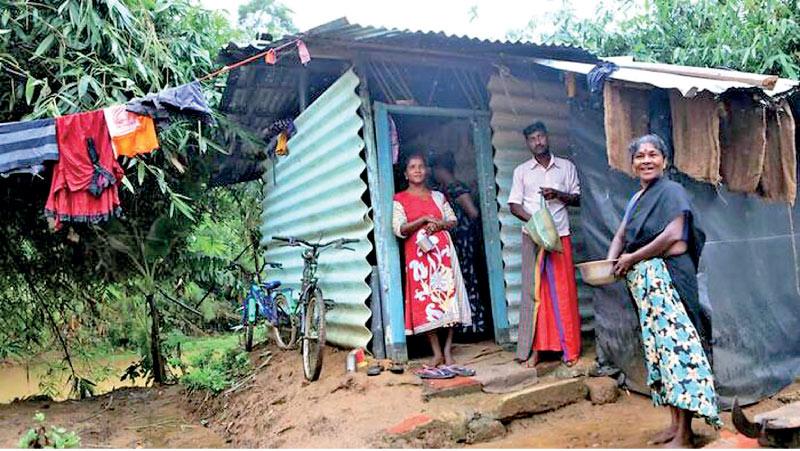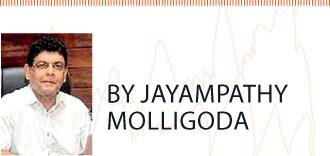01 Jun 2023 - {{hitsCtrl.values.hits}}

The country’s economic crisis has a grave impact especially on the poor and the vulnerable
 The answer in my view, is both-yes and no. This is because, due to strict monetary and fiscal policies adopted since April 2022, the inflationary tendencies are now somewhat controlled, but real economic activities and the GDP growth are decreasing.
The answer in my view, is both-yes and no. This is because, due to strict monetary and fiscal policies adopted since April 2022, the inflationary tendencies are now somewhat controlled, but real economic activities and the GDP growth are decreasing.
Since 2020 till end of 2021, the Sri Lankan government adopted a policy of increasing government expenditure in order to raise aggregate demand for goods and services, expecting some increases in supply of goods and services due to enhanced money income in the hands of the public.
The government also reduced taxes as a policy to induce investments through an increased capital formation. The outcomes of these fiscal and monetary policies were the high inflation from beginning of 2022. It is true that during the year 2021 they have been able to convert the negative growth rate of 4.6 percent in 2020 due to COVID 19 impact into a positive growth rate of 3.5 percent in 2021 (7.8 percent negative growth rate in 2022). It could be argued this policy prescription as a deliberate strategy with a view to providing relief to people and businesses in order to overcome negative effects due to Easter Sunday attack in April 2019 plus the COVID 19.
Present policymakers believe that government spending causes inflation. The level of the money supply, which they feel has a direct impact on inflation, must be used to control it. It can be seen that the immediate reactionary strategy of the present administration as part of a deliberate policy under the ‘forced economic recession strategy’. This is in order to contract the economy to target inflationary levels as determined by CBSL.
Also, the current government has embarked on bold structural reforms to address the inherent weaknesses in the economy which includes a sustainable debt trajectory. The reforms include enhancing tax revenue collection, SOE restructuring in order to improving performance of state-owned enterprises, ensuring autonomy and independence of the Central Bank, safeguarding financial sector stability etc. Further, with correct transfer pricing methods, the market prices for electricity and fuel etc. are being passed on to people andimposing higher taxes enabled them to increase the government revenue.
ADB approved US$ 350 mn loan to provide budget support
The good news is the Asian Development Bank (ADB) on 29/05/23 approved a US$ 350 million special policy-based loan to provide budget support to Sri Lanka for economic stabilization. The program is part of a broader package of economic reforms recommended by the International Monetary Fund’s Extended Fund Facility for the country, which aims to stabilize the economy and lay the foundation for economic recovery and sustained growth.
However, according to ADB President Masatsugu Asakawa, ADB is concerned about the deep crisis in the country and its impact on the people of Sri Lanka, especially the poor and the vulnerable, particularly women. Therefore, it is essential to ensure that adequate social protection is provided.
“ADB will proactively engage with the government, other stakeholders, and development partners to help address structural impediments and plan future support”, ADB President said in his message approving the above loan.
Challenge in textile and garments sector
The negative side in the near future is, as reported in the media, Hirdaramani group has recently closed one factory. I understand that largest in the textile & apparel sector, Brandix and MAS are closing factories temporarily due to lack of orders. One of the main reasons (according to experts in the trade) is US is in recession and demand is decreasing. And markets are down. Unfortunately, other exports are also somewhat stagnating.
There is some concession, because of non-payment of foreign debt due to debt default under the IMF facilitated restructuring exercise. As a result, there is a slight saving in the forex account. Yet hardly any FDIs are forthcoming and also, we can’t expect forex revenue in the near future from tourism & travel sector due to its off season already started. On the other hand, some imports would have to be allowed to kick start the economy and SME sectors which were badly affected during the last eight to ten years.
Twin deficits reduced or not?
As this writer has explained in many articles published since 2015, the Sri Lankan economy has been recording a persistently high ‘twin deficits’ meaning (1) government budget deficits since independence and (2) Balance of Payments (BOP) current account deficit with rest of the world due to deficit in exports minus imports.
And CBSL has been compelled to resort to ‘money printing’ more than what is required/ desired level while the successive governments continued to borrow to bridge the gap thus increasing foreign debt service beyond sustainable levels. As I mentioned in my previous articles, the real issue has been that our exports as a percentage of GDP has come down from 28 percent in four to five decades to 12 percent especially since 2014 to-date. What about the twin deficits now? Still the government has not been able to drastically reduce the twin deficits despite forced strategies. Therefore, it’s rather difficult to build gross official reserves of theCentral Bank as the above ADB loan is to provide budgetary support to the treasury and not to increase the CB reserves. Under the circumstances, what will happen to the exchange rate and forex for essential imports for the next eight-to-ten-month period? Will the exporters once again try and keep forex abroad?
Notable improvement in the repatriation of export proceeds since October 2021
According to the Central Bank report 2022, several measures were taken to improve FC liquidity by establishing rules for repatriation of export proceeds - rule no 1 in February 21. As for the export proceeds monitoring system (EPMS), it was during the CB Governor, Prof WDL who set up a sub- committee to operationalise the system and ithas now evolved.
This addresses many unresolved issues and has given solutions to a major portion of FC shortages in domestic market. Things have now improved according to CB Report- for an example in 2022, total actual export proceeds received amounting to US$ 17,755.8 billion and the total export value during the year 2022 was US$ 16,168.8 billion. They have mentioned in the CB report-22 “Timely imposition of rules and stringent monitoring has resulted in a notable improvement in repatriation of export proceeds.” Unquote. I am surprised I couldn’t come across this vital aspect when IMF staff level comprehensive study reports were published, at least in the public domain. Still some issues in the‘open account’ which needs to be addressed and rectified without any further delay.
Evaluation of adopting different economic models
From the beginning 2022, the CBSL adopted a policy of tightening the monetary policy by increasing the interest rates in order to reduce inflation and inflationary expectations. The neoclassical economic theory states that competition leads to an efficient allocation of resources within an economy. ‘Monetarist economics’ refer to Milton Friedman’s direct criticism of the ‘Keynesian economics’ theory formulated by John Maynard Keynes.
The difference between these theories is that monetarist economics believe in controlling the supply of money that flows into the economy, while Keynesian economics involves government expenditures. Monetarists believe that government spending causes inflation. The level of the money supply, which they feel has a direct impact on inflation, must be used to control it. In contrast, Keynesian economists believe that a troubled economy continues in a downward spiral unless an intervention drives consumers to buy more goods and services.
They believe in consumption, government expenditures and net exports to change the state of the economy. The economy can be controlled best by a government that intervenes when necessary to manipulate demand (consumption). Governments should balance out the cyclical movement of the economy by spending more in downturns and less in prosperous times (thereby preventing inflation). The neoclassical economics is more useful for long-run macroeconomic analysis and Keynesian economics is more useful for analysing the macroeconomic short run.
The neoclassical economics tends to view inflation as a cost that offers no offsetting gains in terms of lower unemployment. However, the neoclassical economic model is not especially helpful in explaining why GDP growth and unemployment moves up and down over the short term of a few years.
Also, the neoclassical model doesn’t offer solutions or helpful when the economy is in long-lasting recession, like the 1930s Great Depression. Keynesian economics tends to view inflation as a price that might sometimes be paid for economic growth and lower unemployment. There is a trade-off between inflation and unemployment/low economic growth in the short run.
Strategy focusing on GDP growth and reduce unemployment
Now that inflation is somewhat controlled, the government and the Central Bank must focus on prioritizing real economic activities through government intervention. That reminds me the well- known formula for economic growth.
GDP= Consumption + Investment+ Government expenditure + (exports -Imports)
GDP growth is the name of the game once again. Otherwise, majority of the people’s disposable income will be totally insufficient to meet day - today needs of their families. Only rich can survive. Some sectors -say, exporters got benefited due to high exchange rate depreciation since March 2022 and resultant increased revenue in rupee terms.
However, those companies have not granted any salary and wage increases to workers yet. Alternatively, have they reinvested back in the national economy although they made net surpluses? On the other hand, some companies in other sectors, such as construction, SME sectors had to close down their operations rendering staff members becoming unemployed.
Finding the balance between Keynesian and Neoclassical models
Therefore, time is opportune for the economic policy makers to spend some time and energy trying to construct models that blend the most attractive aspects of the Keynesian and neoclassical approaches.
It is possible to construct a somewhat complex mathematical model where aggregate demand and prices matter in the short run, but wages, prices, and aggregate supply adjust in the long run. In other words, it has become necessary to create an overall model that encompasses both short-term Keynesian and long-term neoclassical models.
Since the neoclassical economists believe that the economy will correct itself over time, the advantage of a Keynesian stabilization policy would be to accelerate the process and minimize the time that the unemployed are out of work.
Conclusion
We in Sri Lanka tend to overspend without corresponding economic benefits, but for materialistic possessions only. The modern economies should be viewed as systems of cash-flows. The Sri Lankan economy can be re-built (not immediately but medium term) by successfully addressing the structural weaknesses as discussed above and thus eliminating the twin deficits. However, the challenge is the time it can take for the economy to adjust to these changes and how to manage the cash flows during the interim period.
Therefore, the government must look into those badly affected segments, including SMEs, construction industry etc. and address those vulnerabilities as a matter of priority. Already, poor and some middle-class families became poorer.
As a result, social unrest will increase and the ruling party unpopularity will increase, thus paving way for political forces demanding a General or Presidential elections sooner or later. Negative side is once again the government of the day would have to abandon the IMF policy prescription. As we know, policy inconsistency is the worst enemy for private sector led growth strategy facilitated by governments creating conducive environment.
(The writer is former Chairman of Sri Lanka Tea Board)
01 Nov 2024 35 minute ago
01 Nov 2024 57 minute ago
01 Nov 2024 1 hours ago
01 Nov 2024 2 hours ago
01 Nov 2024 2 hours ago